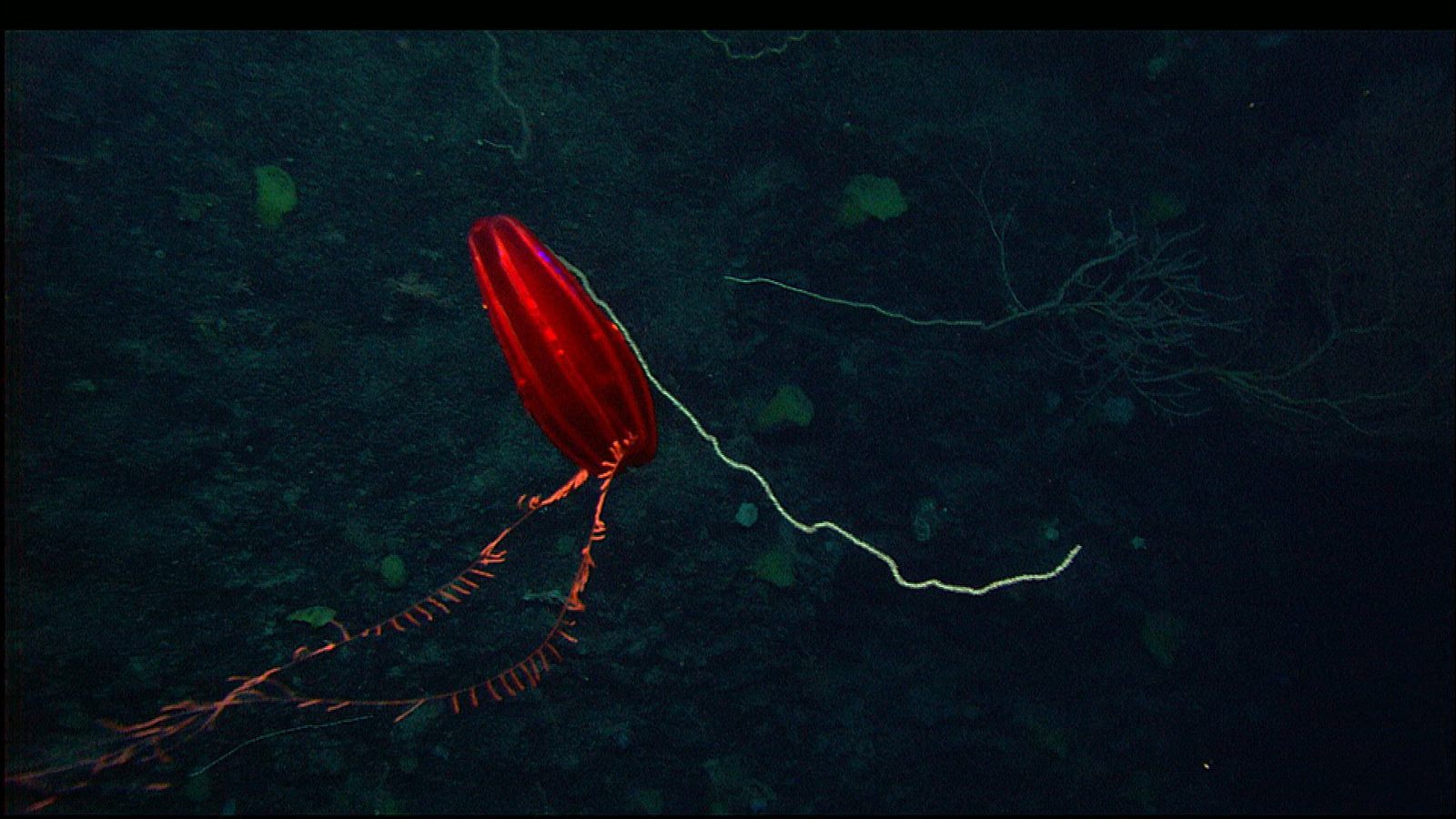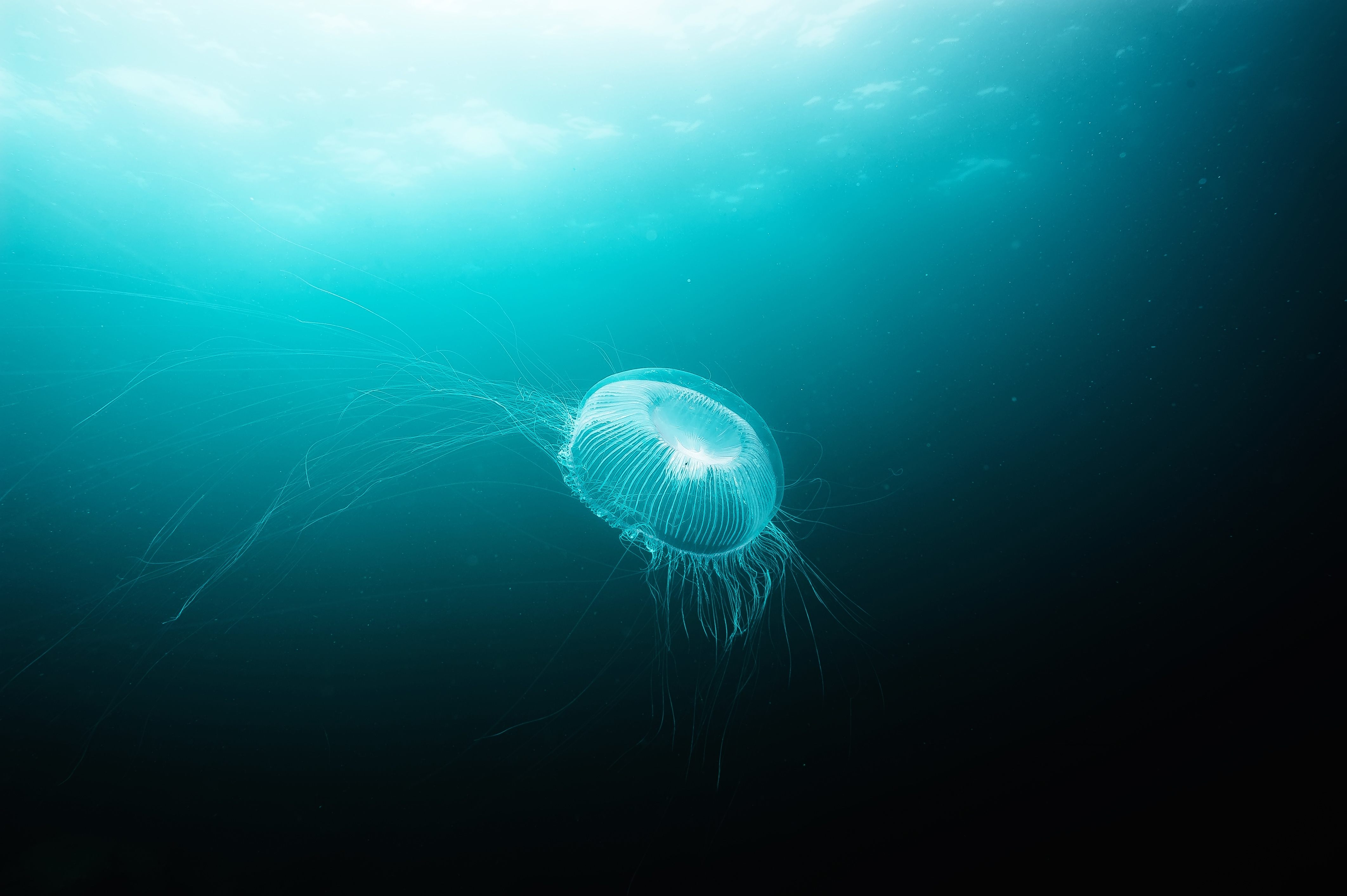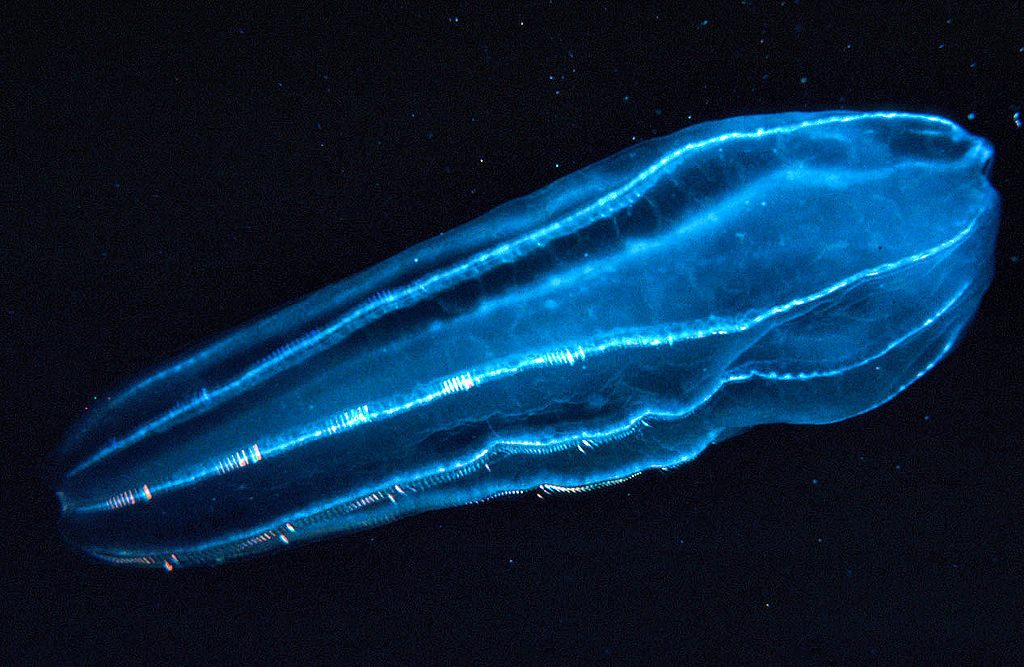The Neon Glow of Bioluminescent Sea Creatures
Glow-in-the-dark marine life.
A bioluminescent firefly squid. (Photo: Visuals Unlimited/Getty Images)
Each year on the western coast of Japan, nature creates a particularly unique spectacle. Just under the surface of Toyama Bay, between March and June, firefly squid gather themselves up from the depths to spawn. Their method of attracting a mate is exceptional: from their photophores—light producing organs—they emit electric blue light. For the captivated onlookers, it’s startlingly neon display of bioluminescence.
Around 80 percent of ocean-dwelling organisms emit light, according to the National Oceanic and Atmosphere Administration (NOAA). Various types of deep-sea fish, krill, jellyfish and comb jellies, marine worms and plankton are all bioluminescent. Many of these creatures reside in the so-called “twilight zone” of the ocean: the depths between 600 and 3,300 feet, where sunlight barely reaches.
Bioluminescence is created by a chemical reaction, for a variety of purposes—anything from camouflage to communication to attracting prey. Regardless of what it is used for, the other-worldly neon glow of bioluminescent life is extraordinary to behold.

A sea walnut—a type of comb jelly. (Photo: Steven G. Johnson/CC BY-SA 3.0)

An Argyropelecus hemigymnus, a type of deep-sea hatchetfish, feeding. (Photo: Prof. Francesco Costa/CC BY-SA 3.0)

Noctiluca scintillans - also know as Sea Sparkle - light up the surface of the water in Zeebrugge, Belgium (Photo: © Hans Hillewaert/CC BY-SA 4.0)

A Tomopteris, a type of marine worm that exhibits yellow bioluminescence. (Photo: uwe kils/CC BY-SA 3.0)

A red ctenophore, or comb jelly. They live at around 3,280 feet in depth. (Photo: NOAA Photo Library/CC BY 2.0)

Antarctic krill. The bioluminescent organs are visible at the base of the eyestalk and thorax.(Photo: NOAA Photo Library/CC BY 2.0)

An aequorea victoria jellyfish. (Photo: Kondratuk Aleksei/shutterstock.com)

The zooplankton Beroidae. (Photo: NOAA/Public Domain)









Follow us on Twitter to get the latest on the world's hidden wonders.
Like us on Facebook to get the latest on the world's hidden wonders.
Follow us on Twitter Like us on Facebook